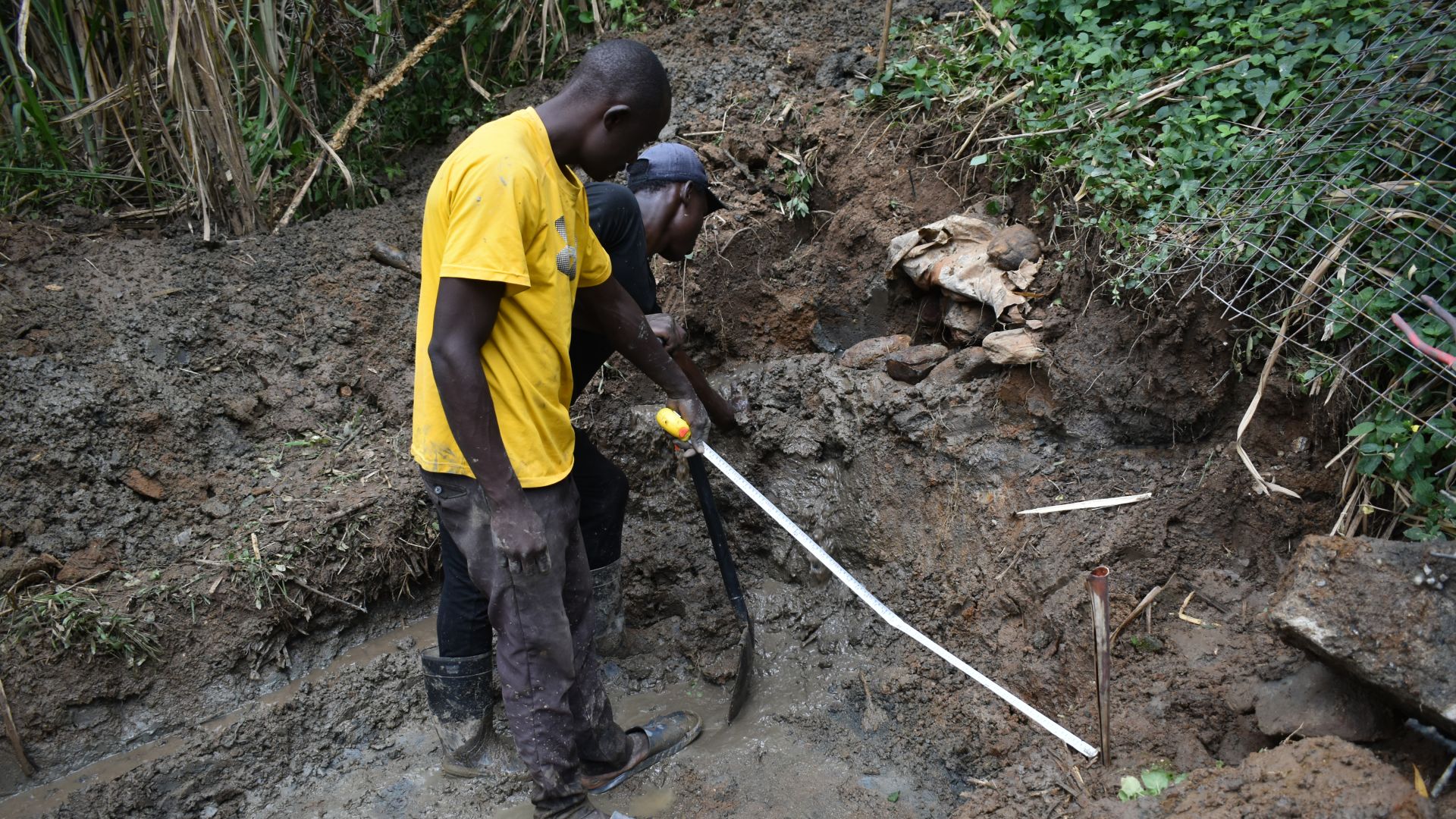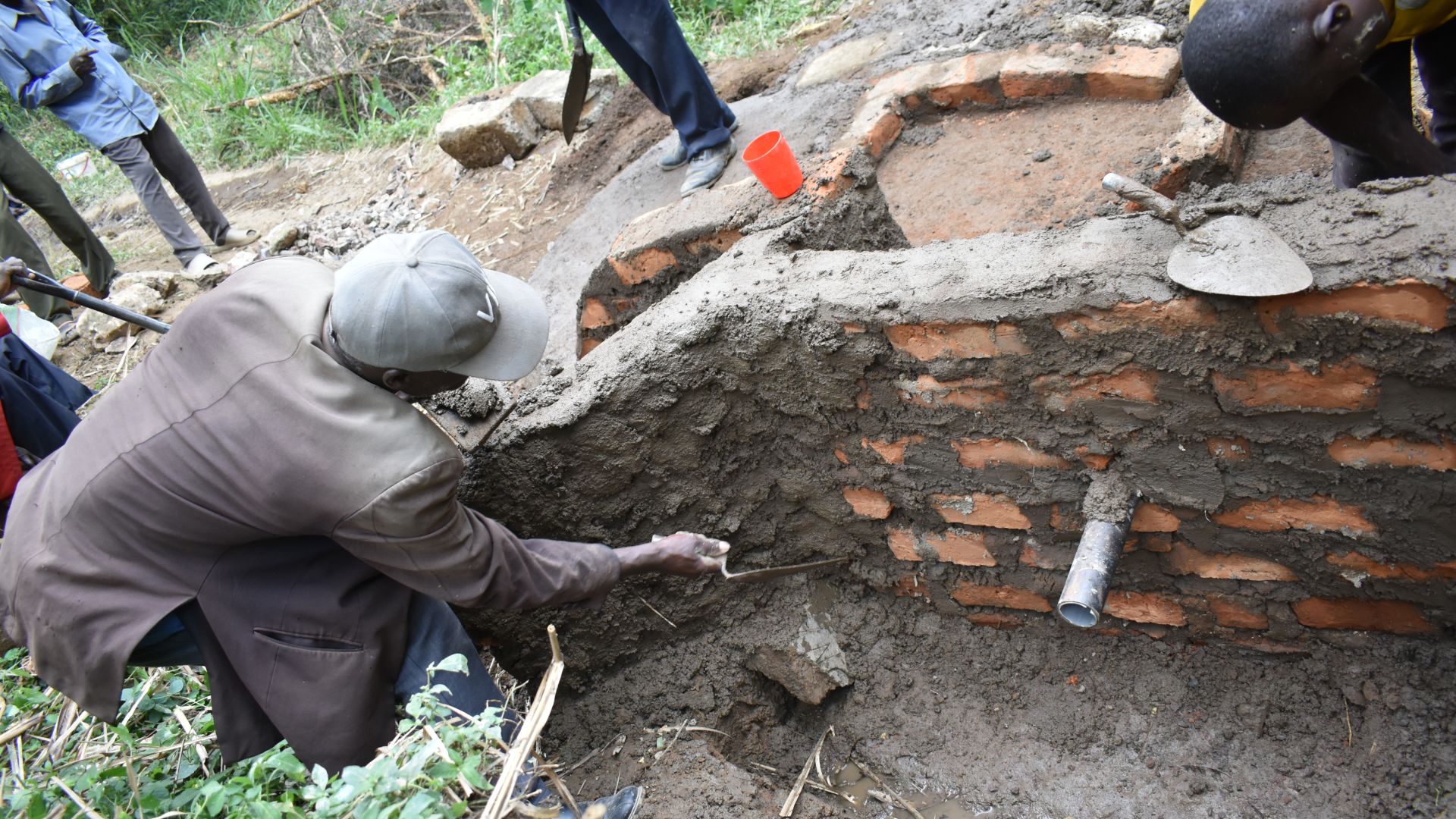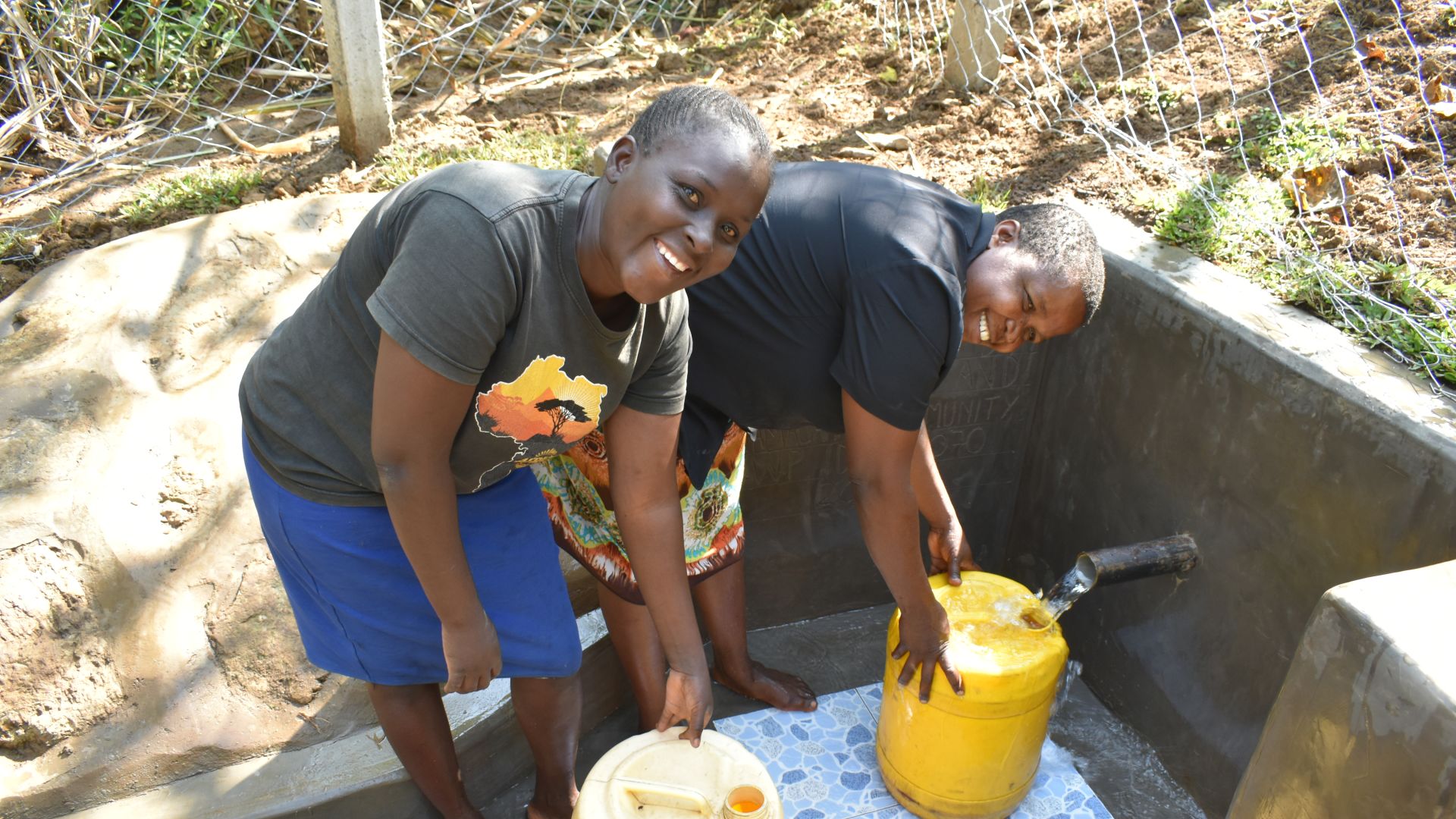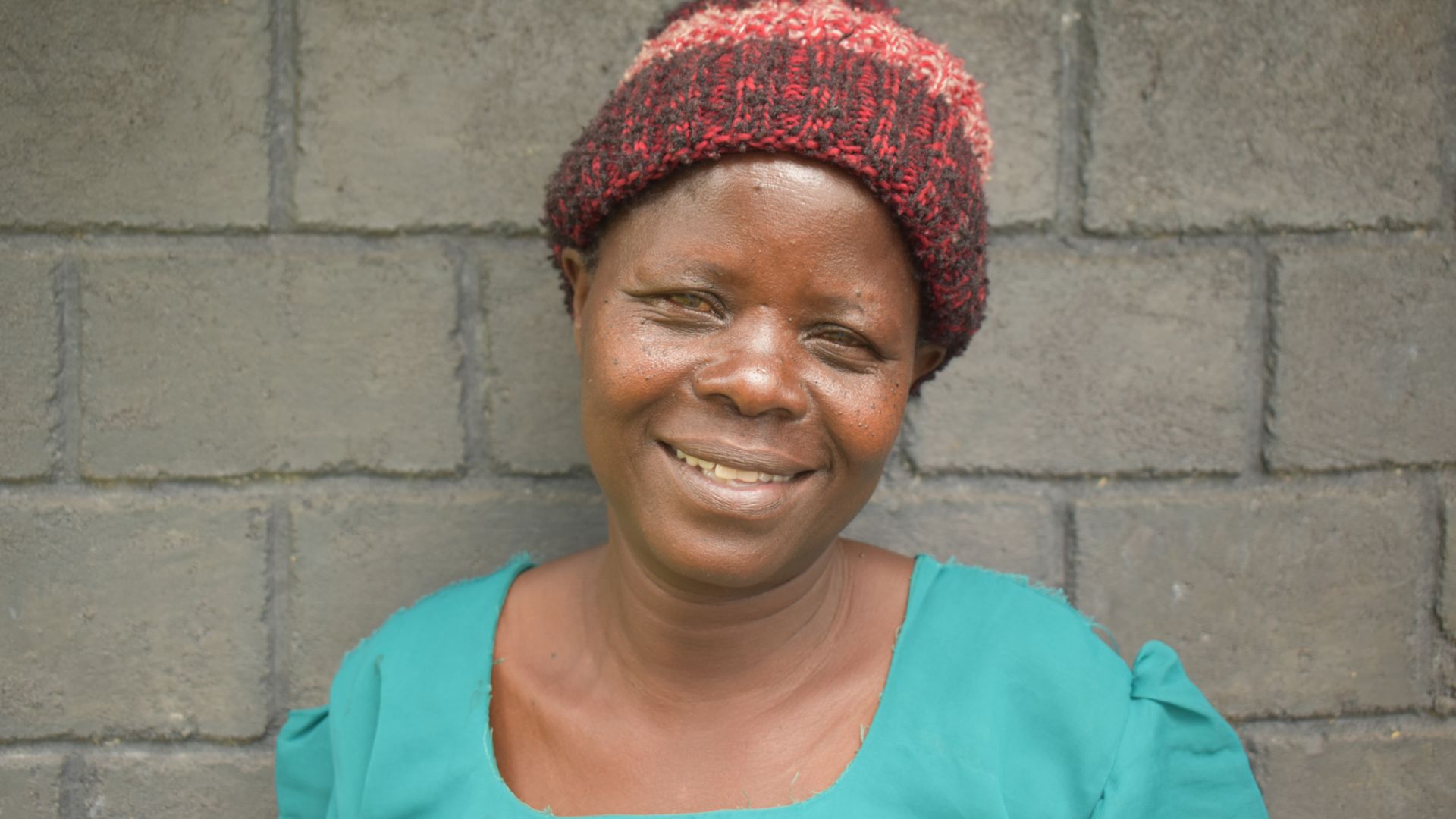Namagara is a huge community of 1,500 people, all relying on Sospeter Shamala Spring for their water. The spring is broken down and dangerous to access, and it has been for the last eight years.

Community members navigating down to the spring.
23-year-old farmer Centrine Mudagi shared, "Considering the number of accidents I personally have had on that slope, my safety is [a] great concern because I worry that someday I may not be able to live the story. It scares me that I might get a fracture that might immobilize me forever."

Centrine hauling water.
"The area around the spring is muddy and unkempt. Human activity [such as] farming around the spring has contributed to the poor hygiene around the spring. Blocked drainage [caused] debris in the water [and] stagnating at the drawing point. The terrain at this waterpoint is extremely dangerous, especially during rainy seasons. Cases of falls have been witnessed, with the community members getting injured. The elderly cannot access the waterpoint, forcing them to rely on other people to bring the water upstream so that they can carry it home," Field Officer Lillian Achieng' said, describing the state of the spring.

She continued, "The water looks clear at [first] sight but could be contaminated due to the overflow, flooded water at the drawing point, and other water oozing from different points around the waterpoint."
Without accessible, safe water, Centrine and the rest of her large community will continue to risk their safety every time they collect water—up to ten times a day!
Not only are they risking their safety, but they must also wait in long lines. With 1500 people relying on one spring, it steals their time, which is crucial for farmers like Centrine to earn a living.

Farming Activities.
"I love working on my farm a lot. If I am not fetching water, I'll be on my farm to maximize my farm produce. Water is the engine that runs my home. I am not able to do much in my home without water. Cooking, bathing, laundry, cleaning utensils, drinking, and even quenching my animal's thirst can only be done using water," Centrine shared.
Protecting the spring in the Namagara Community will allow the community members to collect water more peacefully and efficiently. Centrine will have time to tend her farm and care for her family without worrying about falling and getting injured.
Centrine has big hopes of feeling safe at her spring again.
She said, "Our feet won't step in the flooded water at the waterpoint again. I won't be worried [about] an insect or animal biting my child because of stepping in the flooded water. We won't experience falls again and this will assure our safety."
Steps Toward a Solution
Our technical experts worked with the local community to identify the most effective solution to their water crisis. They decided to safeguard the existing flowing spring.
Spring Protection
Springs are natural water sources that originate from deep underground. As water travels through various layers of the earth, it undergoes a natural filtration process, making it cleaner and safer to drink. To protect these spring sources from contamination, we construct a waterproof cement structure around layers of clay, stone, and soil. This design channels the spring water through a discharge pipe, facilitating easier, faster, and cleaner water collection.
Chlorine Dispenser
As an extra measure towards water quality safety, uniquely engineered chlorine dispensers are installed at all of our spring protection projects so community members can treat their water with pre-measured doses of chlorine. The chlorine treats any residual contamination and stays active for two to three days, ensuring water stays safe to use even when stored at home. Chlorine delivery and maintenance of the dispensers are part of our ongoing community support.
Community Education & Ownership
Hygiene and sanitation training are integral to our water projects. Training is tailored to each community's specific needs and includes key topics such as proper water handling, improved hygiene practices, disease transmission prevention, and care of the new water point. Safe water and improved hygiene habits foster a healthier future for everyone in the community. Encouraged and supported by the guidance of our team, a water user committee representative of the community's diverse members assumes responsibility for maintaining the water point, often gathering fees to ensure its upkeep.

 Protected Spring
Protected Spring
 Rehabilitation Project
Rehabilitation Project




































